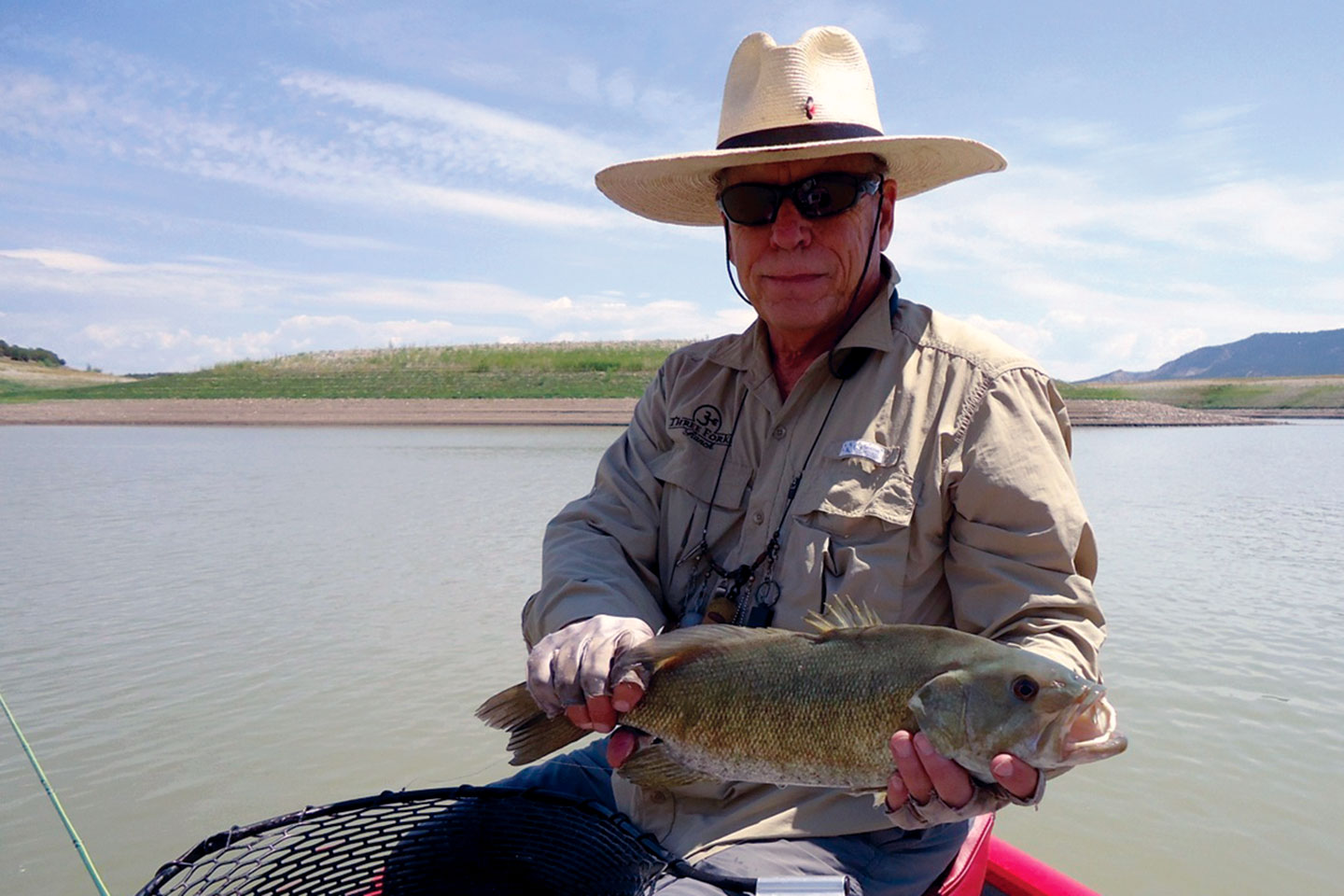Navajo Lake could be called Three Rivers since it is formed by the Pine, San Juan, and Piedra rivers. However, since a 1908 Supreme Court decision ruled the Navajo Nation had the water rights, it was named Navajo Lake. So, on July 30, 1958 construction began on Navajo Lake. Five years later on April 20, 1963, Navajo Lake was opened, and it has been a huge success. Makes me want the folks who control Lake Nighthorse to see how some things can be done right, and in a timely manner.
The dam is 402 feet high, 3,648 feet long, and contains 26,840,863 cubic yards of material. This structure created a lake with a total capacity of 1,708,600 acre feet of water and has a surface area of 15,610 acres.
Enough history and editorial commentary, fly-fishing on Navajo is great. I have fly-fished it twice in as many weeks and caught enough bass and pan fish to feed a large family. (Of course, I released them all.) Three things are needed to fly-fish Navajo, two fishing licenses, and a boat. Navajo is situated in two states, New Mexico and Colorado, and since there is no reciprocal license between the states, you’ll need both licenses. Next is a boat. There are multiple roads that lead to various beaches, for wade fishing, but the best way to fish is by boat. If you don’t have a boat, or a friend with a boat that likes to fly-fish from it, there are three marinas on the lake that rent boats of all types. As a boat owner I can attest that renting a boat is probably a lot cheaper.
I have been accessing the lake from the Two Rivers Marina. It is located on the Colorado end of the lake, where the Piedra and San Juan rivers come together. If you’re fishing for trout I suggest you venture up one of those rivers. The other two marinas are located in New Mexico, where the Pine River flows into the lake. The trout fishing up the Pine can also be good. If, like me, you’re fly-fishing for bass, pan fish, and carp, head down the lake, from Two Rivers, towards the New Mexico side. This spring I have fished Eui Canyon, Bancos Canyon, and some unnamed slots. In these areas my fishing partners and I have caught some of the largest small mouth bass we have ever hooked into. They are large enough that you wouldn’t be ashamed to weigh them in for a professional bass tournament.
To catch these bass we have used small chartreuse clousers, black and green woolly buggers, and flies you’d normally use for pan fish. Once you get the right pattern and color, stick with it. Our casts have been up against any rock structure we can find. On Navajo, those are everywhere. Once the cast has been made, I suggest you let it sink to about five feet and then slowly strip it back to you. When the bass strikes set the hook harder than you would on a trout. Bass have hard mouths and it takes a firm set to hook them. A four or five-weight rod, with a leader designed for bass fishing works well. It also helps to have a net. I have not been able to get the bass to hit a popper, yet, but I’m still working on that.
Not to be overlooked are the carp. I have seen more of them with each outing. They are still deep but gradually moving to the surface. My next outing to Navajo will be for carp. I normally find them further up the canyons where the water is warmer. Once they start moving you can find them in pods of a dozen or more. For the carp a six or seven-weight rod with at least a fifteen-pound leader is needed. I have had more success with flies that resemble wilted and dead lettuce. However, I know of people who have caught carp on dry flies. I now have a new goal.
So, until Lake Nighthorse gets opened, head out to Navajo. You won’t regret it.

